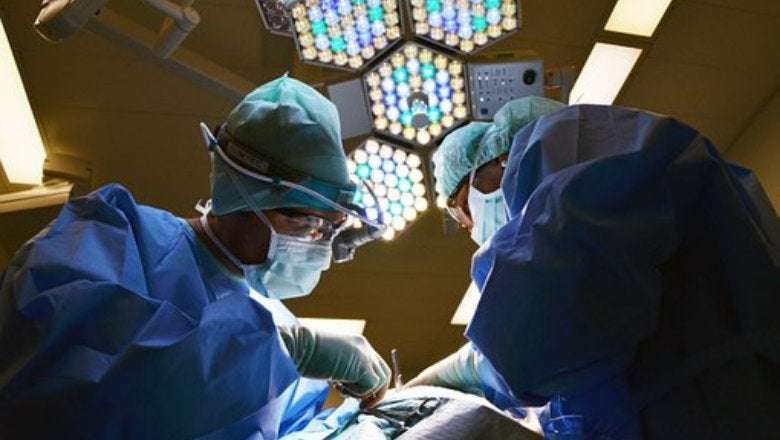In a paper published today in Nature Communications, the scientists have identified a new type of cell called a hepatobiliary hybrid progenitor (HHyP), that forms during our early development in the womb. Surprisingly, HHyP also persists in small quantities in adults and these cells can grow into the two main cell types of the adult liver (Hepatocytes and Cholangiocytes) giving HHyPs stem cell-like properties.
The team examined HHyPs and found that they resemble mouse stem cells which have been found to rapidly repair mice liver following major injury, such as occurs in cirrhosis.
For the first time, we have found that cells with true stem cell-like properties may well exist in the human liver. This, in turn, could provide a wide range of regenerative medicine applications for treating liver disease, including the possibility of bypassing the need for liver transplants. – Lead author Dr Tamir Rashid from the Centre for Stem Cells & Regenerative Medicine
Liver disease is the fifth biggest killer in the UK* and the third most common cause of premature death, and the number of cases is continuing to rise. It can be caused by lifestyle issues such as obesity, viruses, alcohol misuse or by non-lifestyle issues such as autoimmune and genetic mediated disease.
Symptoms of liver disease include jaundice, itching and feelings of weakness and tiredness and in more severe cases, cirrhosis. The only treatment for severe liver diseases at present is a liver transplant which can lead to a lifetime of complications and for which the need for donor organs greatly outweighs the increasing demands.
We now need to work quickly to unlock the recipe for converting pluripotent stem cells into HHyPs so that we could transplant those cells into patients at will. In the longer term, we will also be working to see if we can reprogramme HHyPs within the body using traditional pharmacological drugs to repair diseased livers without either cell or organ transplantation/ – Dr Rashid

Archon002 on July 29th, 2019 at 13:01 UTC »
Doctor here- the title here is totally incorrect. Yes, they discovered a useful liver progenitor cell, but liver cells already regenerate. The problem with things like cirrhosis is that the scarring destroys the delicate structure of the organ and the new cells have nowhere to grow into. These cells will not remove the scar (so far nothing will-only a transplant) and will not work to regenerate an organ. They may mean that these cells can be removed from the body to grow a new organ in the lab, but that is a long ways away from even animal trials at this point.
Slovish on July 29th, 2019 at 12:51 UTC »
I was under the impression that the liver already can regenerate its tissues and that it's the continual damage over time that causes scar tissue to form.
Is this study indicating that it may be possible to reverse cirrhosis and return scar tissue back into functioning liver cells?
mvea on July 29th, 2019 at 10:04 UTC »
The title of the post is a copy and paste from the title and subtitle of the linked academic press release here:
Journal Reference:
Joe M. Segal, Deniz Kent, Daniel J. Wesche, Soon Seng Ng, Maria Serra, Bénédicte Oulès, Gozde Kar, Guy Emerton, Samuel J. I. Blackford, Spyros Darmanis, Rosa Miquel, Tu Vinh Luong, Ryo Yamamoto, Andrew Bonham, Wayel Jassem, Nigel Heaton, Alessandra Vigilante, Aileen King, Rocio Sancho, Sarah Teichmann, Stephen R. Quake, Hiromitsu Nakauchi, S. Tamir Rashid.
Single cell analysis of human foetal liver captures the transcriptional profile of hepatobiliary hybrid progenitors.
Nature Communications, 2019; 10 (1)
Link: https://www.nature.com/articles/s41467-019-11266-x
DOI: 10.1038/s41467-019-11266-x
Abstract
The liver parenchyma is composed of hepatocytes and bile duct epithelial cells (BECs). Controversy exists regarding the cellular origin of human liver parenchymal tissue generation during embryonic development, homeostasis or repair. Here we report the existence of a hepatobiliary hybrid progenitor (HHyP) population in human foetal liver using single-cell RNA sequencing. HHyPs are anatomically restricted to the ductal plate of foetal liver and maintain a transcriptional profile distinct from foetal hepatocytes, mature hepatocytes and mature BECs. In addition, molecular heterogeneity within the EpCAM+ population of freshly isolated foetal and adult human liver identifies diverse gene expression signatures of hepatic and biliary lineage potential. Finally, we FACS isolate foetal HHyPs and confirm their hybrid progenitor phenotype in vivo. Our study suggests that hepatobiliary progenitor cells previously identified in mice also exist in humans, and can be distinguished from other parenchymal populations, including mature BECs, by distinct gene expression profiles.